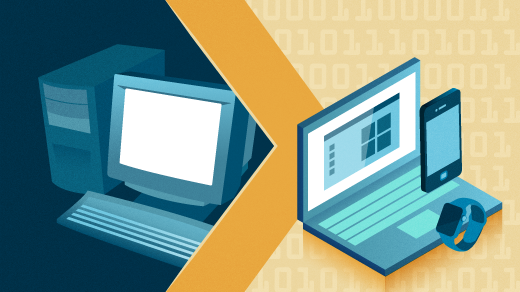
Do you want to run multiple machines on your computer? I hope this will help you decide on which two booting process is better for you.
There are two main approaches to perform if you want to run different operating systems on one machine. The first one is to install an operating system alongside the main os you are using and it is called dual booting. It makes your two OS separated from each other but in on the drive. The second way is to install virtual machines that can be used to run multiple copies of OS with your main OS at the same time
Things to consider on which boot is better for you and your computer.
Do You Have a Powerful Computer?
Adding another operating system to your computer can only make it worse if your current one isn’t working properly. If you’re already short on RAM, devoting half of your RAM to a secondary OS will make your first OS stutter. As a result, dual-booting is the only way to go for older computers and laptops. You can choose between operating systems at the start of a dual boot, allowing you to dedicate all of your hardware to one at a time.
A virtual machine gets more viable as your hardware becomes more powerful. The operating system determines how much power a virtual machine requires. Nothing is required if you’re using a lightweight Linux distribution. You’ll need a more recent rig if you’re virtualizing Windows 10 under macOS.
Do You Plan to Do CPU or GPU-Intensive Tasks?
Even with the most powerful computers, often struggle to do resource-intensive tasks like gaming, 3D animation, or video editing, among other things. Emulation is used in virtualization, and emulated operating systems aren’t as efficient as native ones, therefore this is the case. A dual-boot arrangement is preferable if you’re planning to perform something that uses a lot of CPU or GPU. The majority of the time, playing games in a virtual computer is a complete disaster.
Do you want to use one OS at a time?
Multitasking is made easy with virtual machines, which allow you to switch between various operating systems by pressing Alt + Tab. If you need to transition between OSes on a frequent basis, they are the superior choice. Virtual machines, on the other hand, aren’t the best option if you’re going to labor for hours on end under a virtualized operating system.
Let’s say you use Windows as your primary operating system, but you’re a programmer who prefers to work in a Linux environment. You might as well dual-boot into Linux and take full advantage of the speed of a native operating system if you’re going to immerse yourself in a three-hour coding session.
Do You Only Need to Run a Specific App?
For example, you’re a photographer and you’re completely satisfied as a Linux user. As a result, you’ll often be asked to edit a few photographs for a client using Adobe Lightroom. In this situation, dual-booting isn’t necessary. This is where a virtual machine really shines if you just want to run a specific software that isn’t accessible on your native operating system.
You can use VM to start the app then close it when you’re done to get back to work quickly
Reference:
https://www.softwarehow.com/dual-boot-vs-virtual-machine/
https://www.hongkiat.com/blog/dual-booting-vs-virtual-machine/
